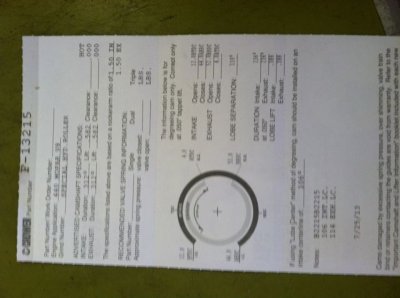68gtx
Well-Known Member
thinking about going roller in my new build, have never done the conversion before, what is all involved? obviously cam and roller lifters,. can you use say a crower cam and comp lifters ? or erson cam and comp lifters? if a cam is made for solid rollers can you put hydraulic lifters on it?also is there any special block machining required to a stock block? will it need a cam thrust plate like a smallblock uses? if so how is that done?
thanks in advance!!!!
thanks in advance!!!!

















